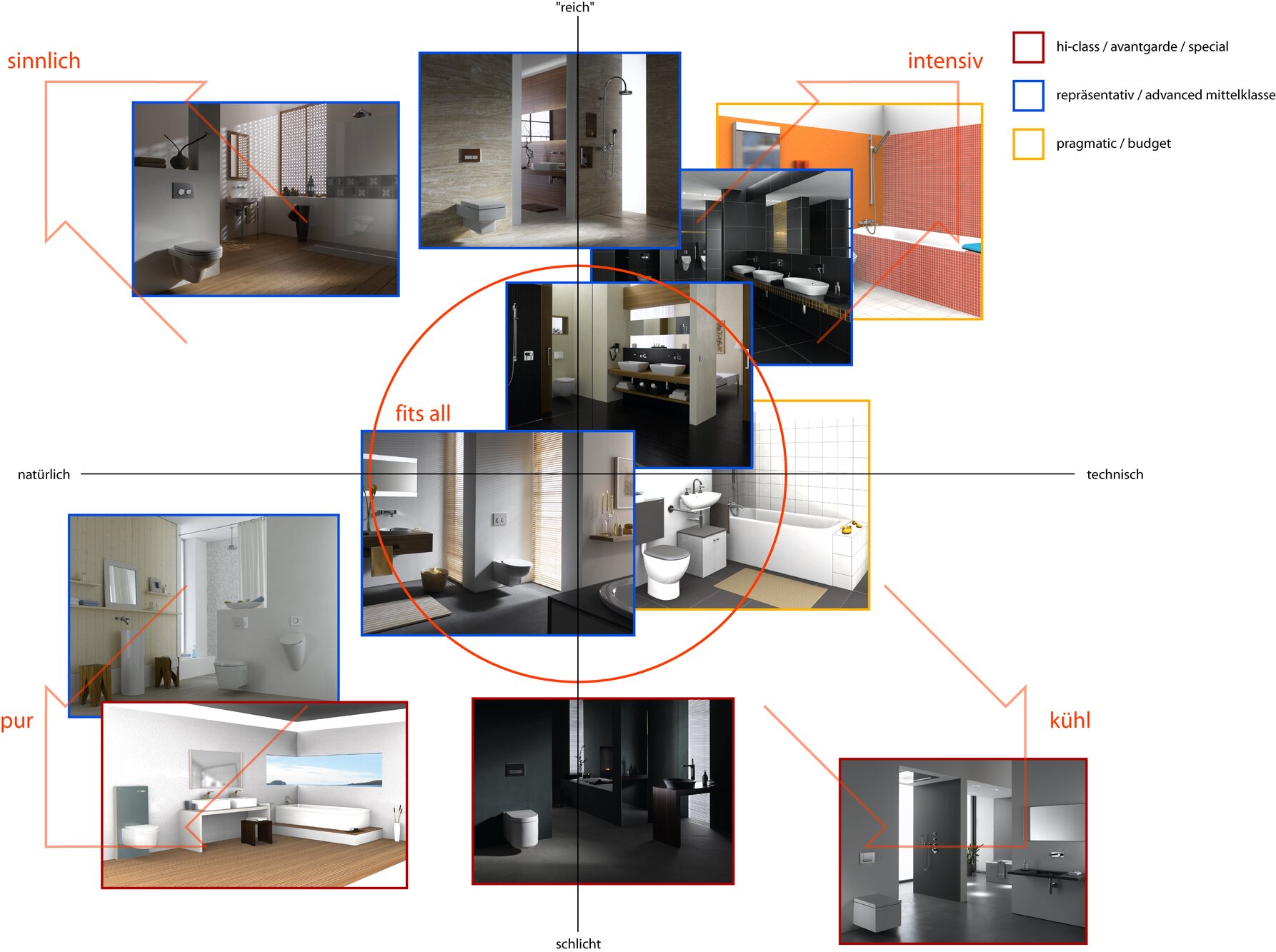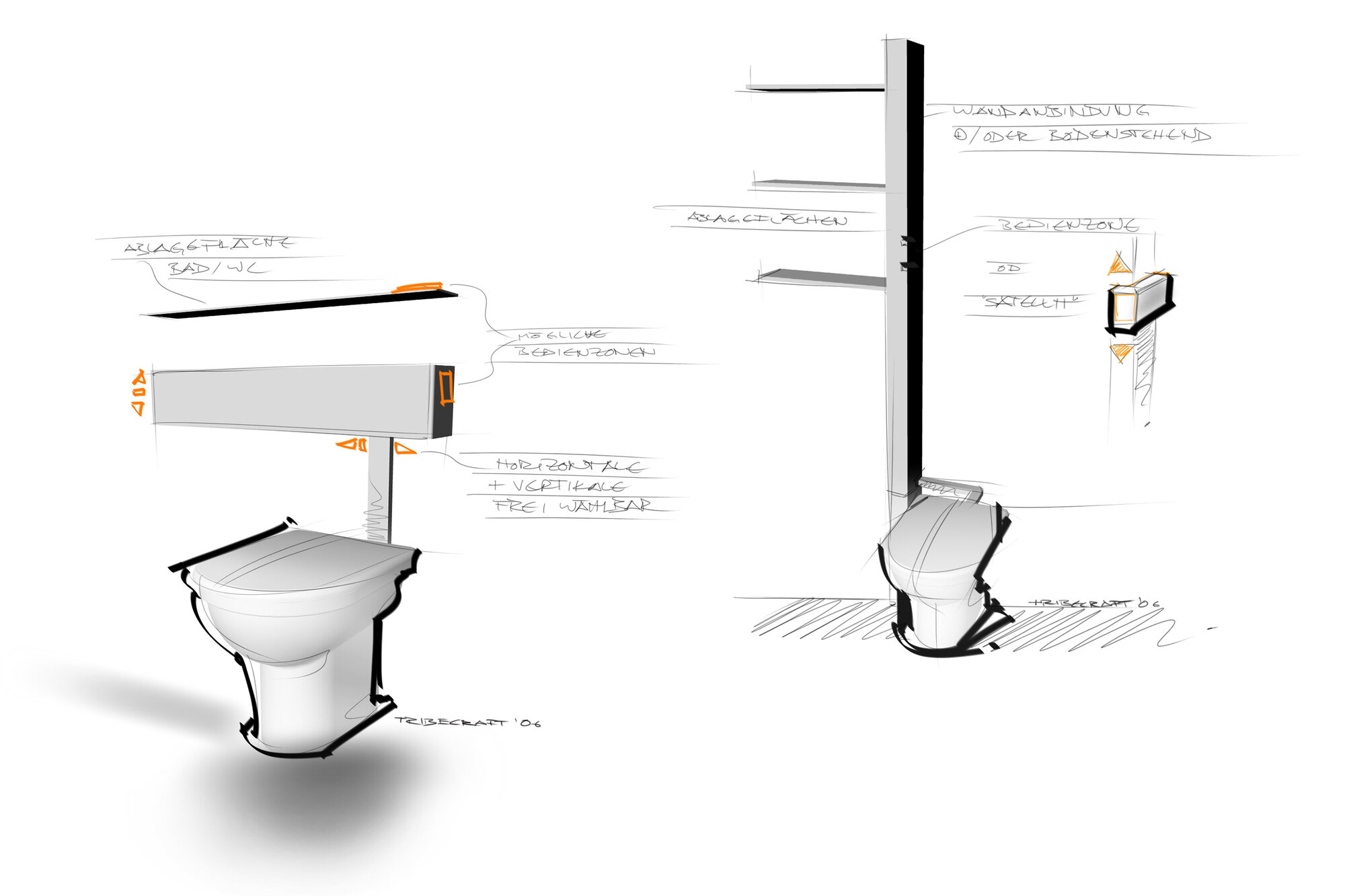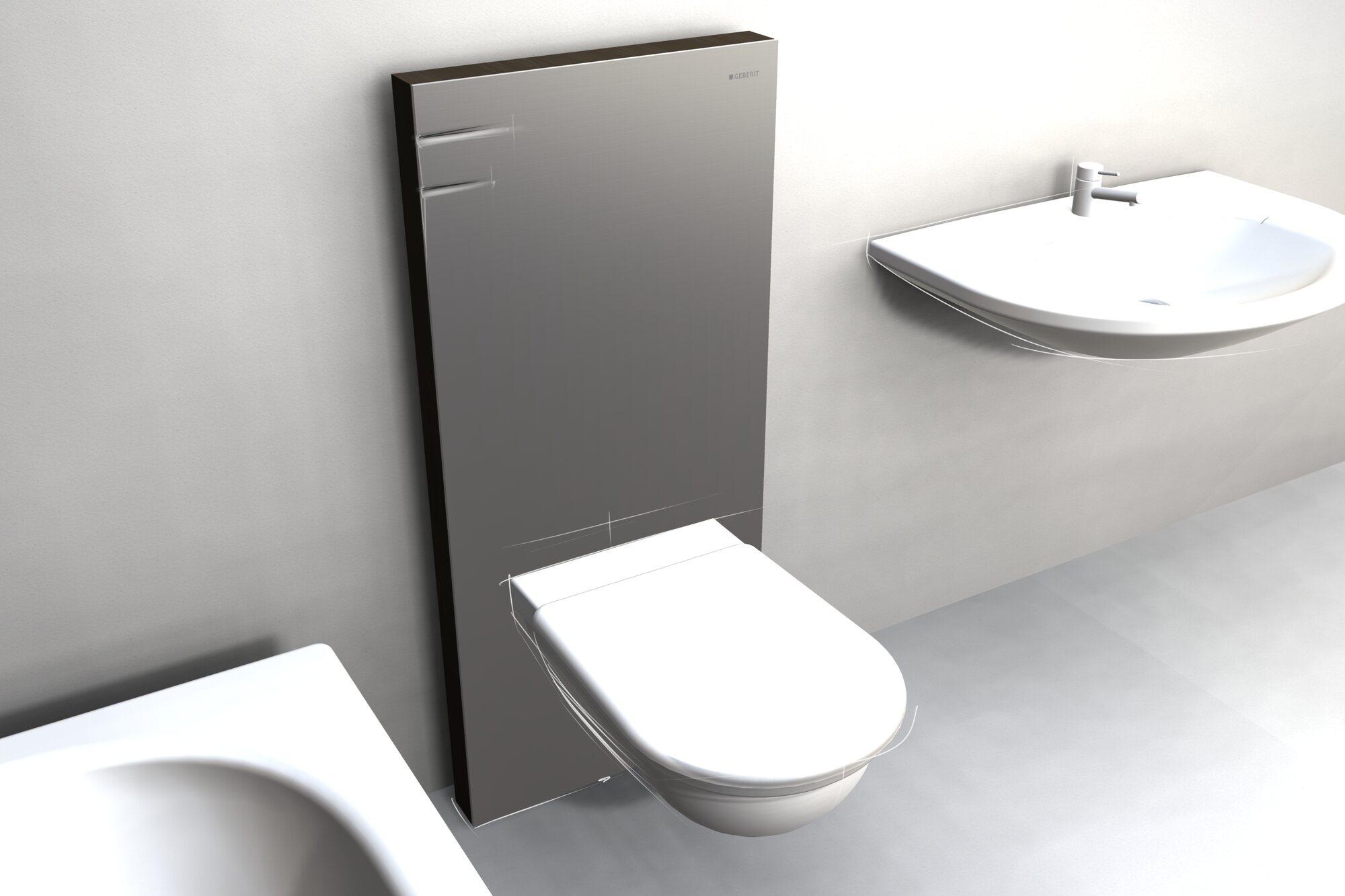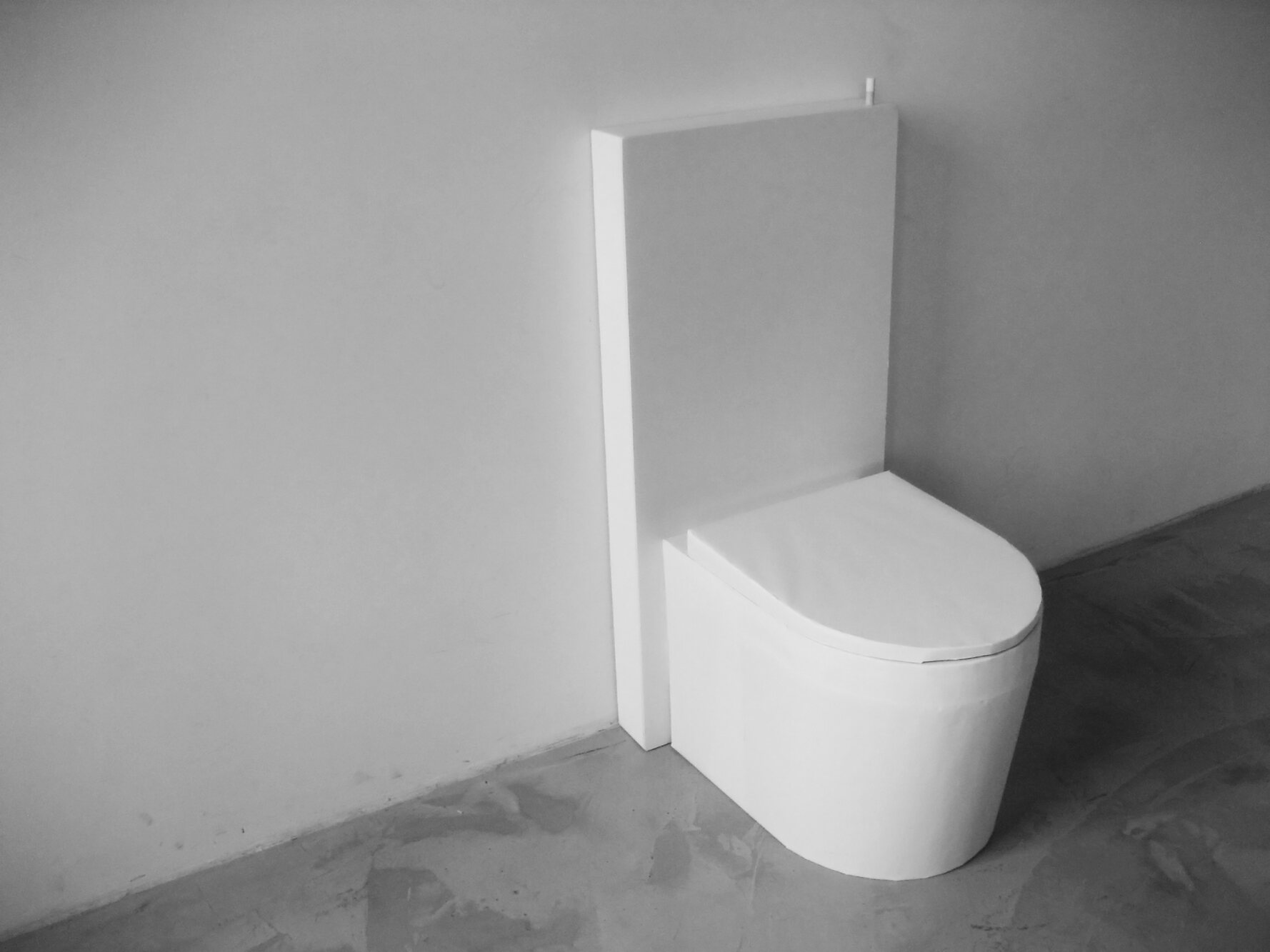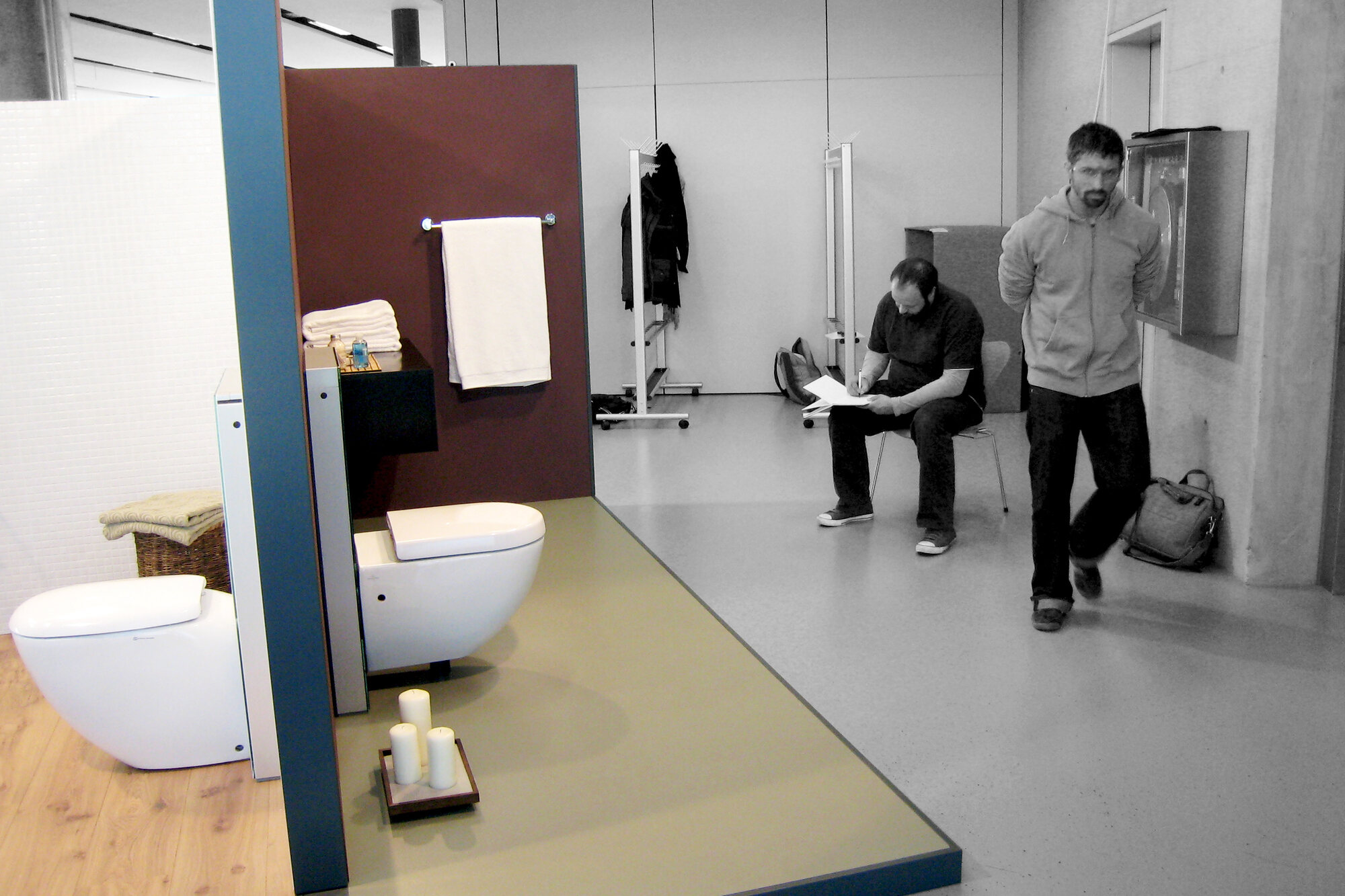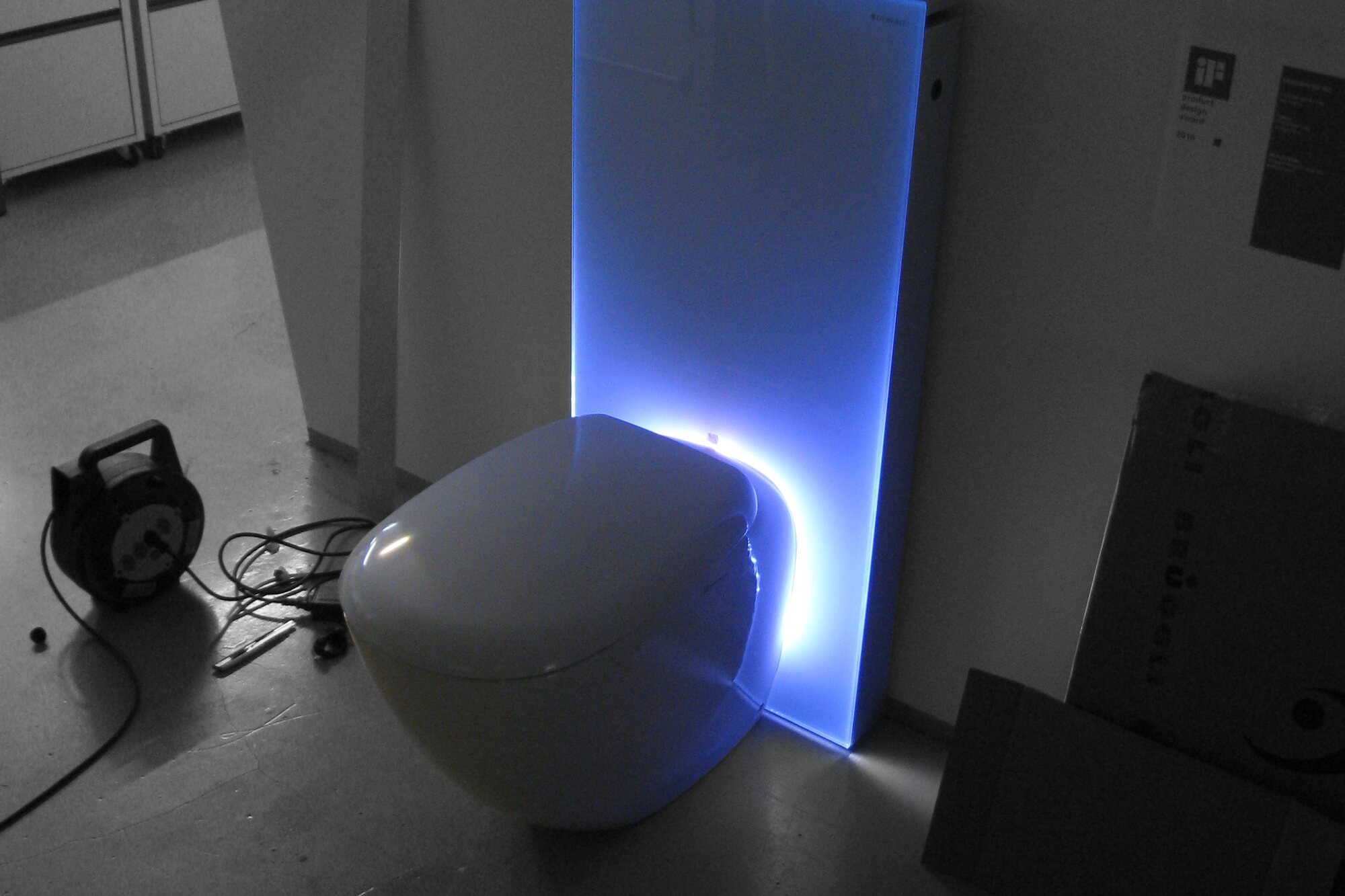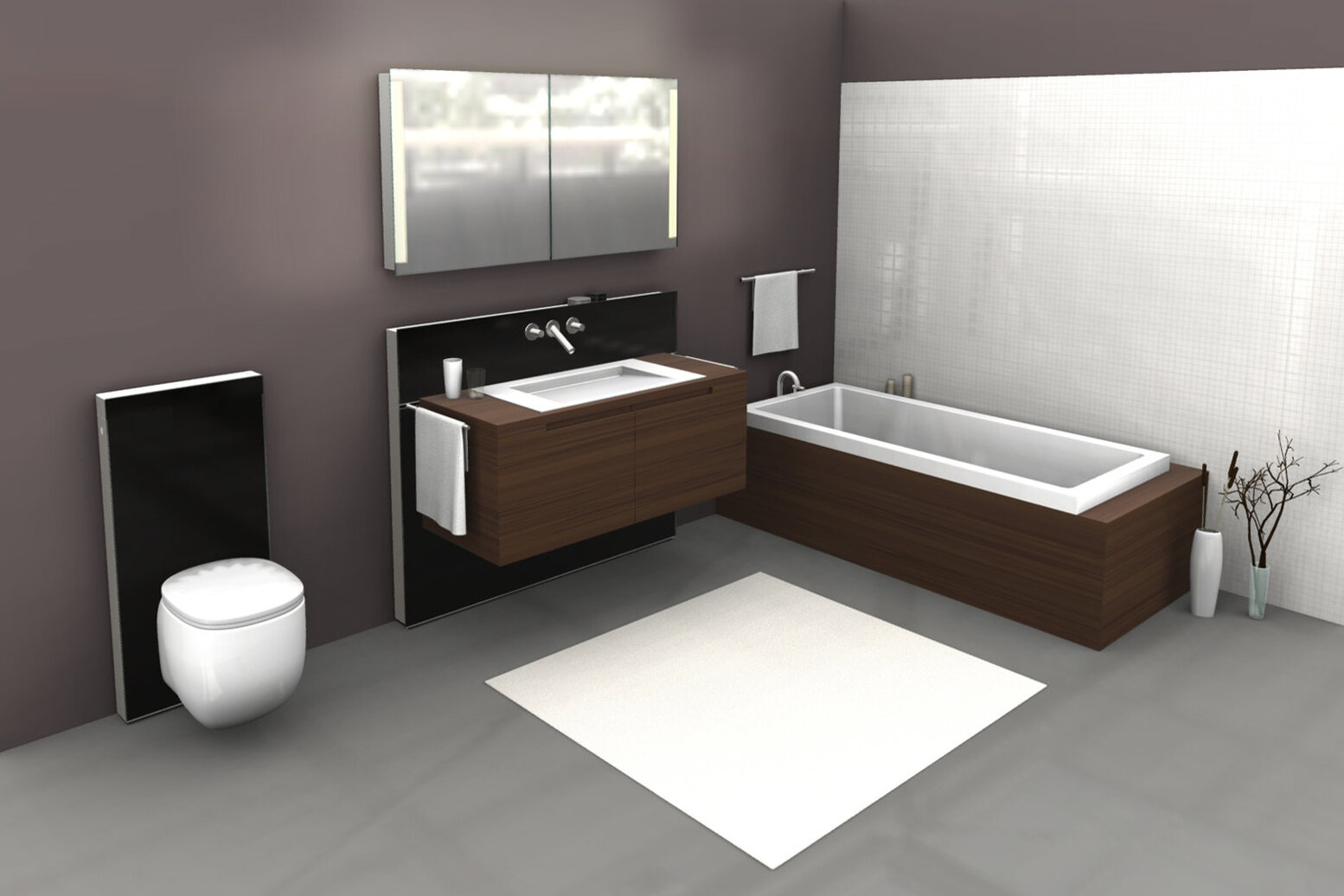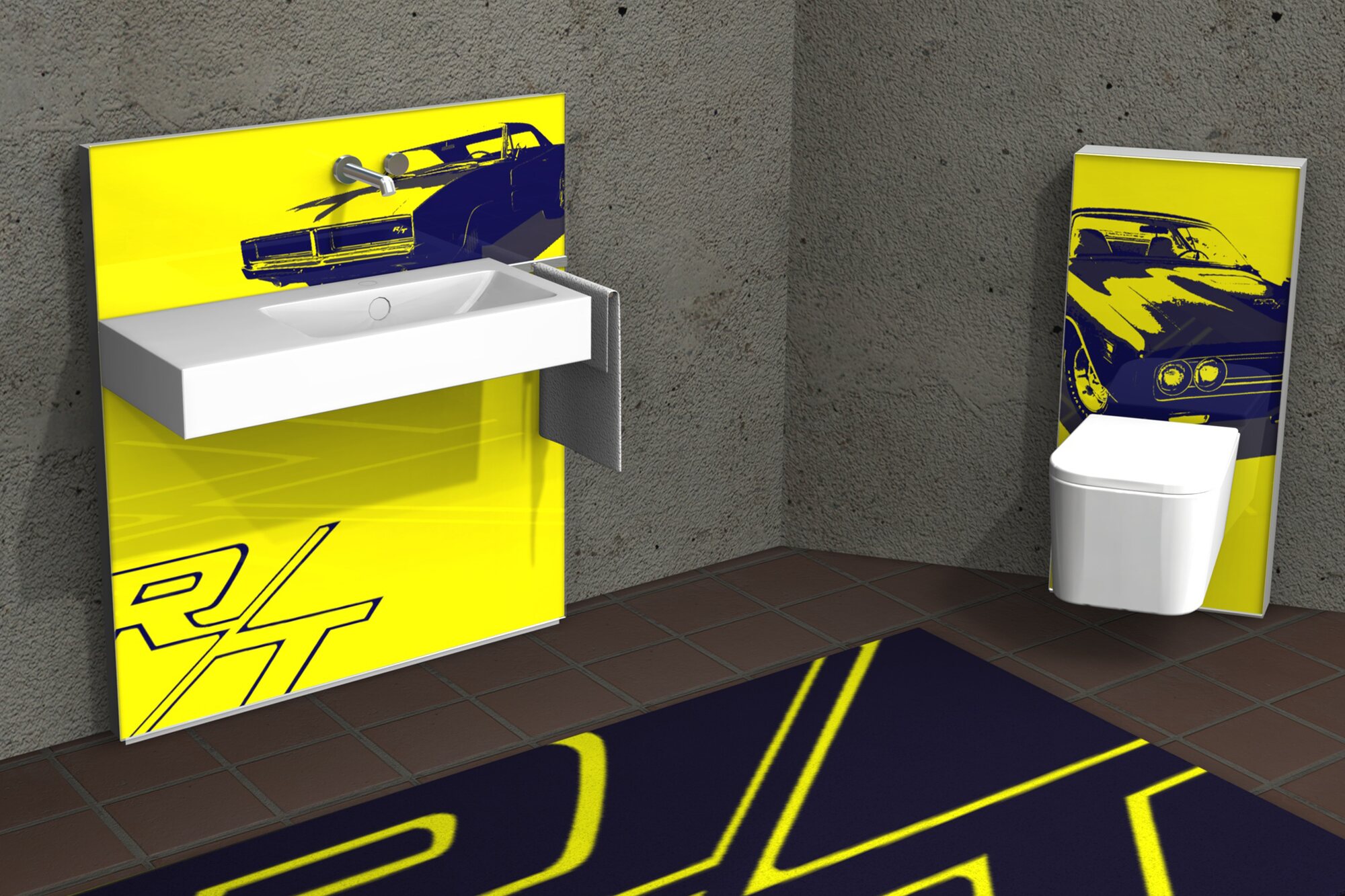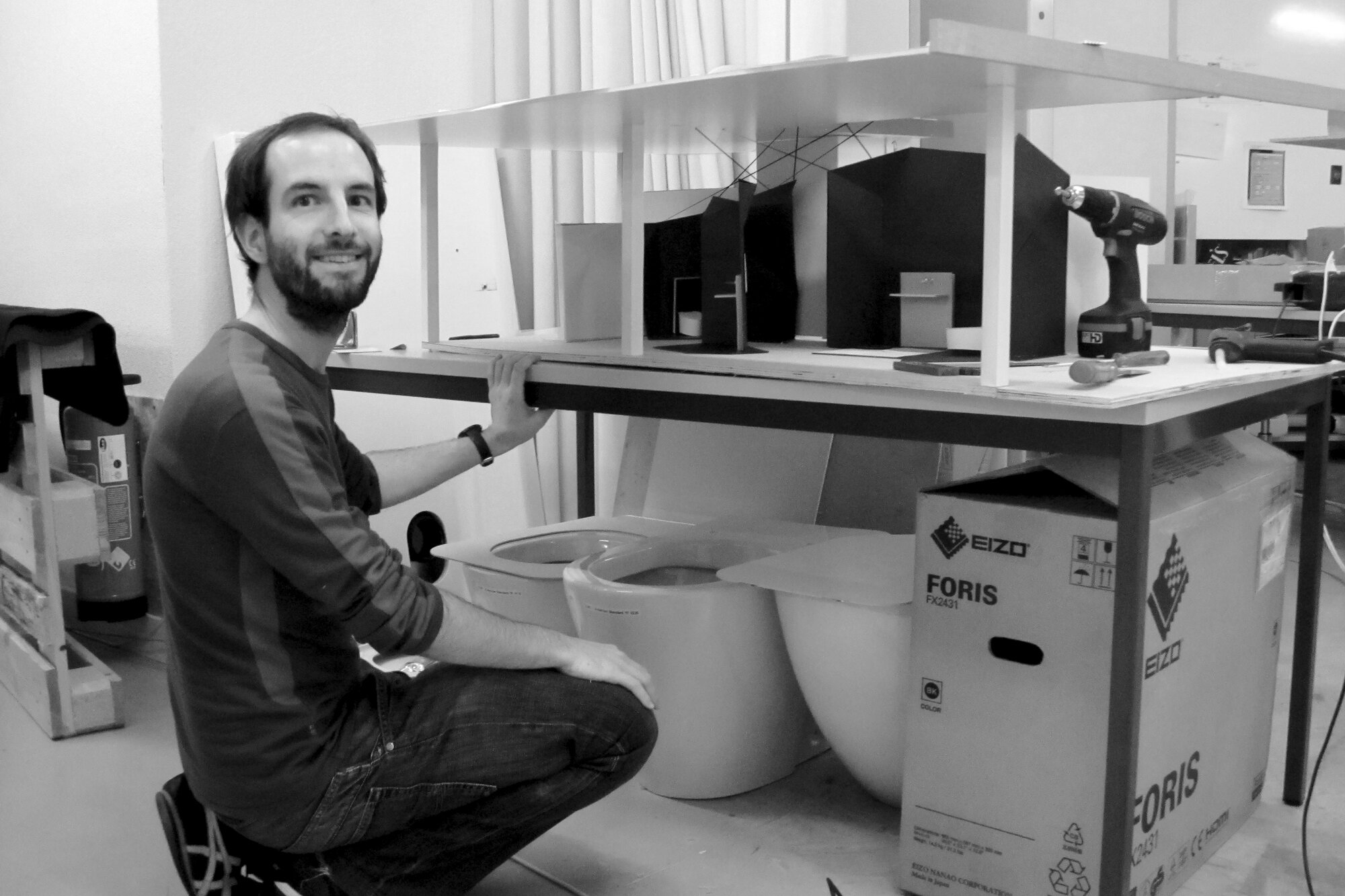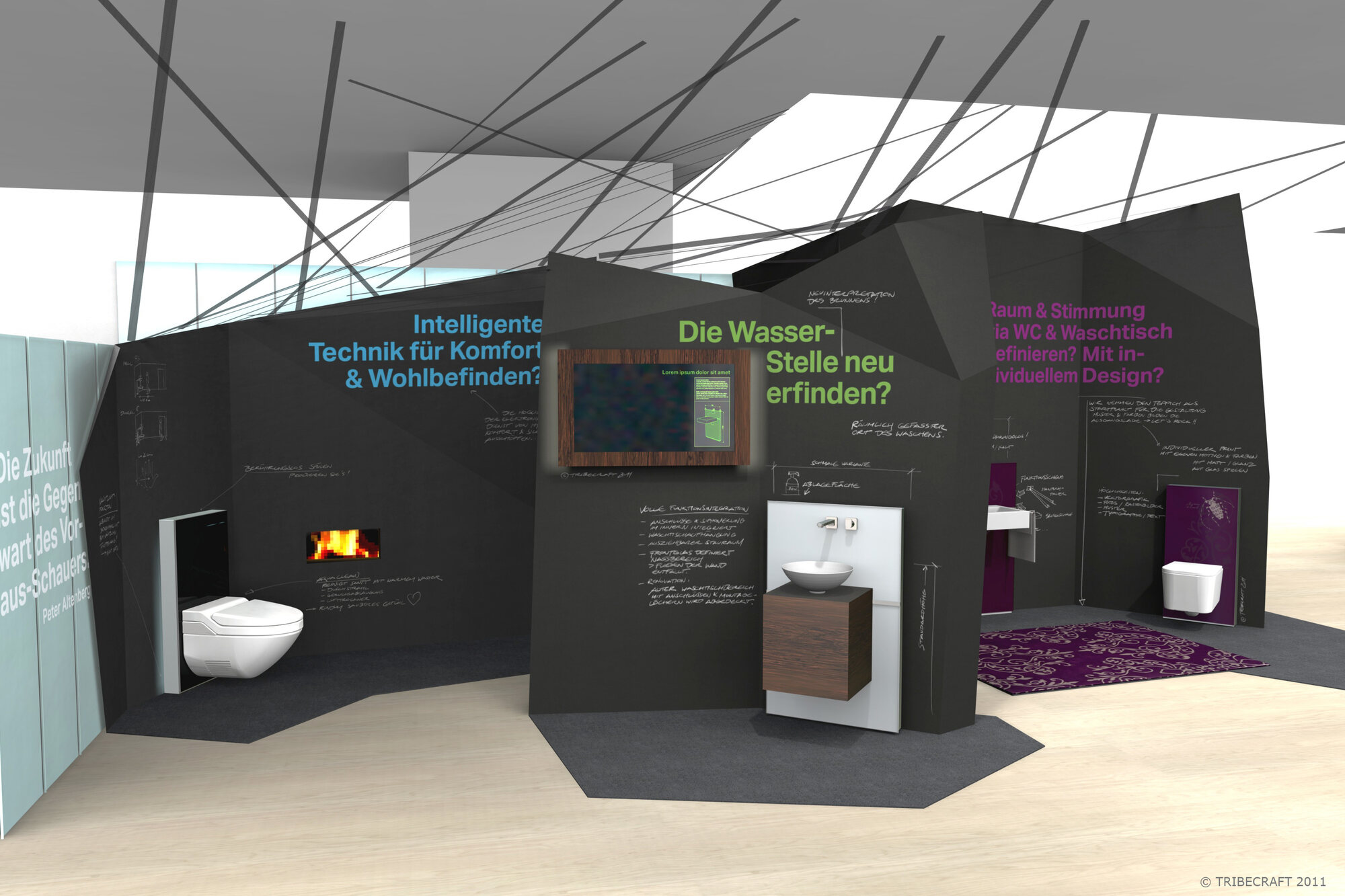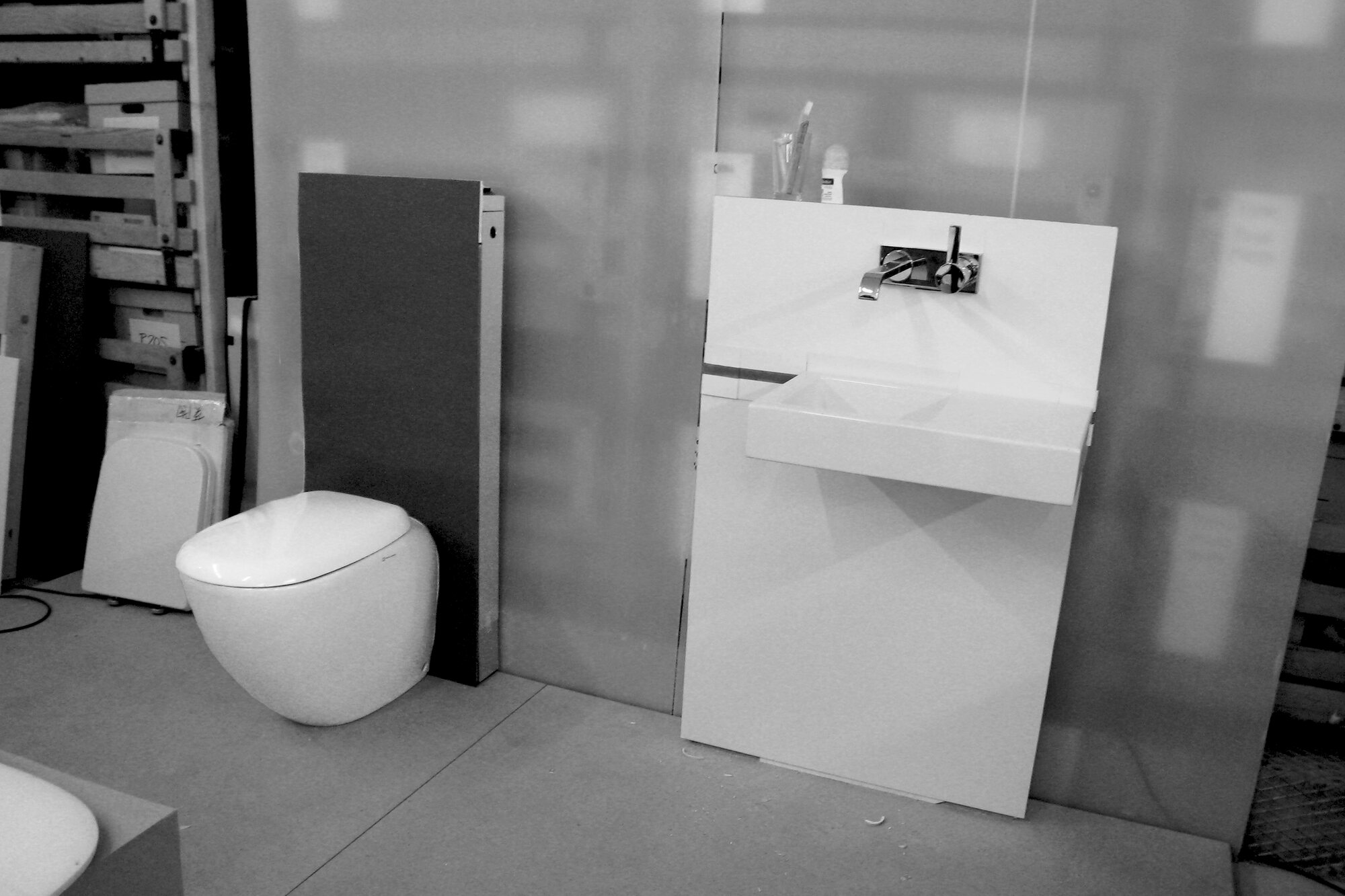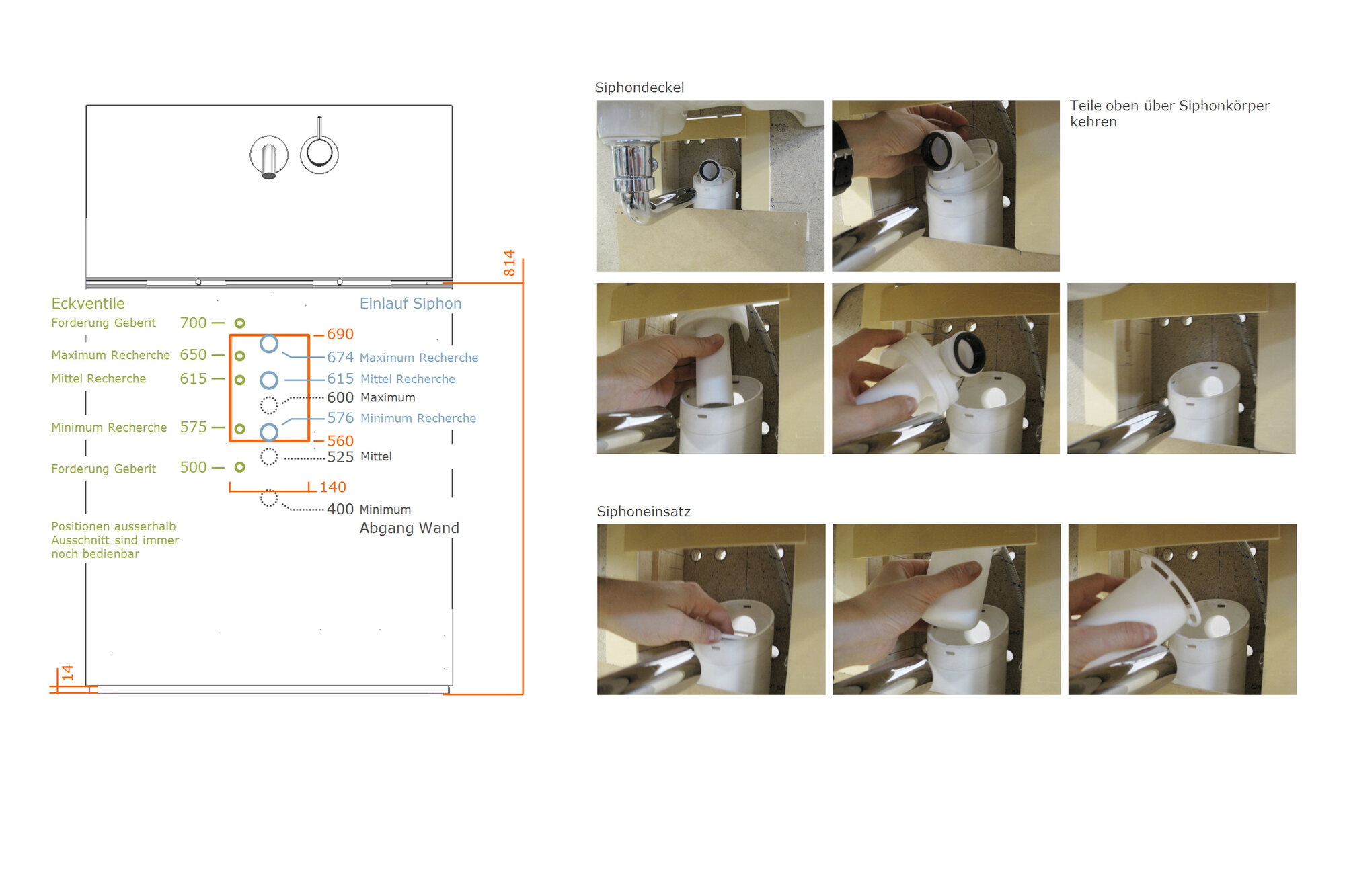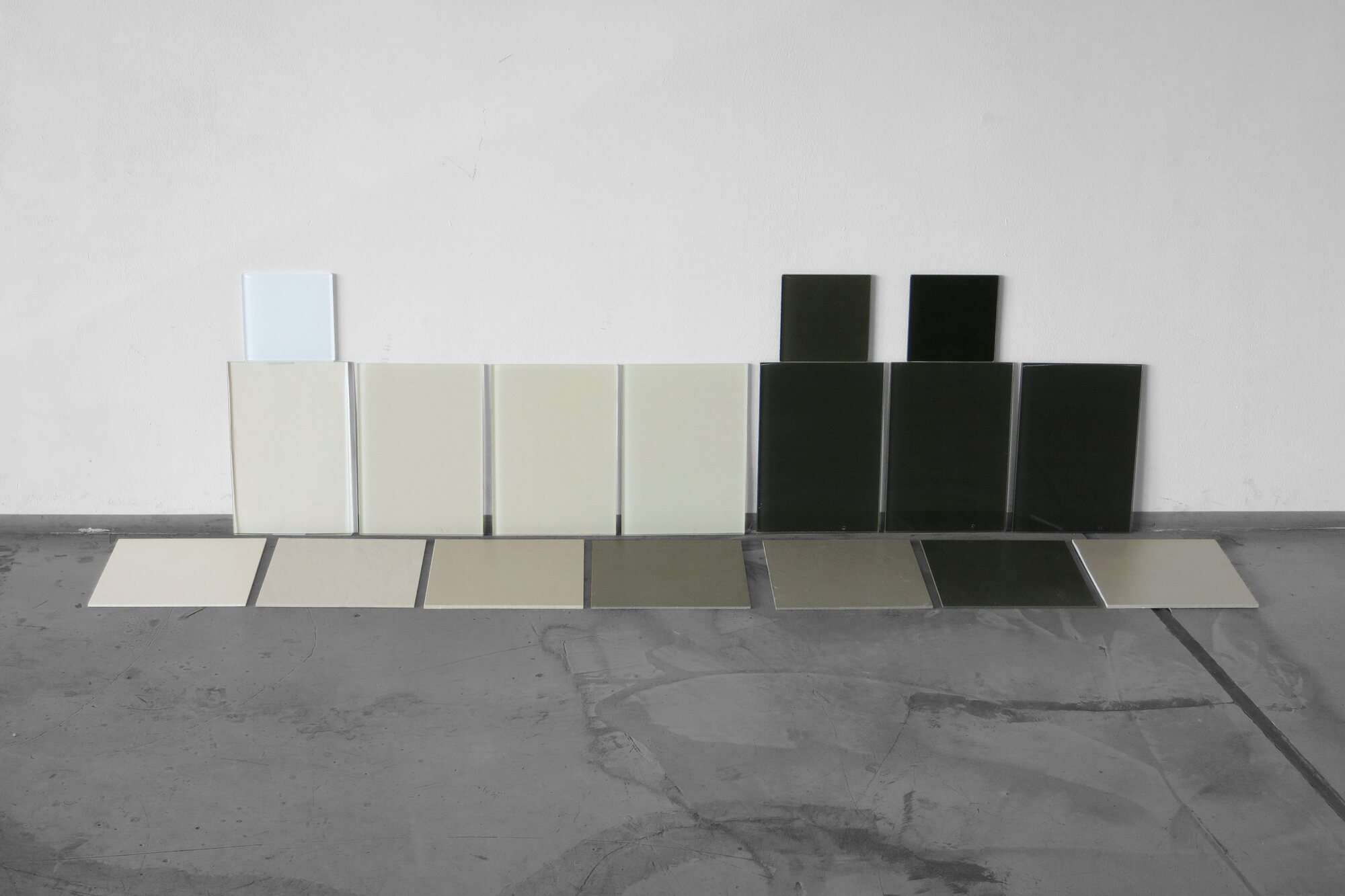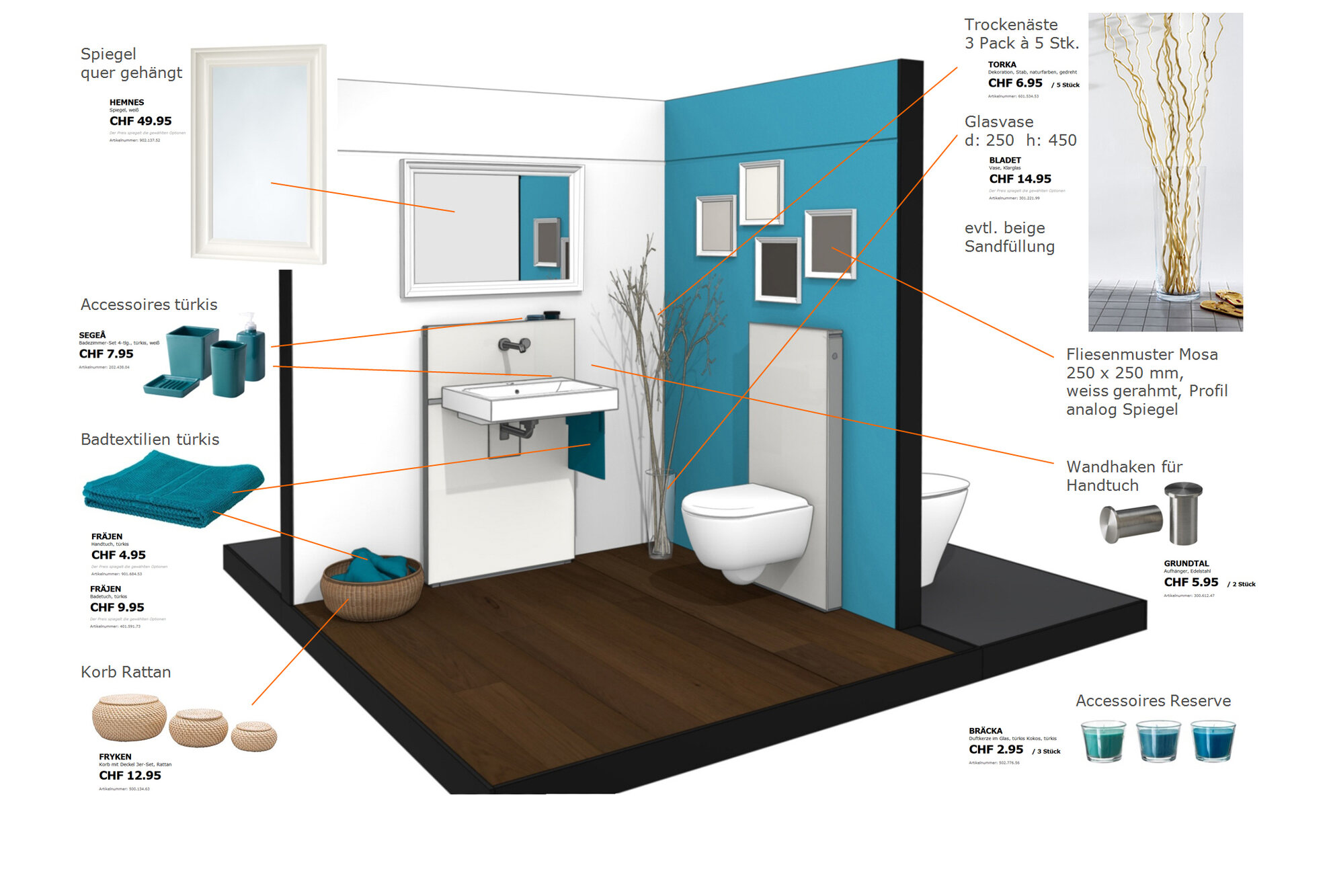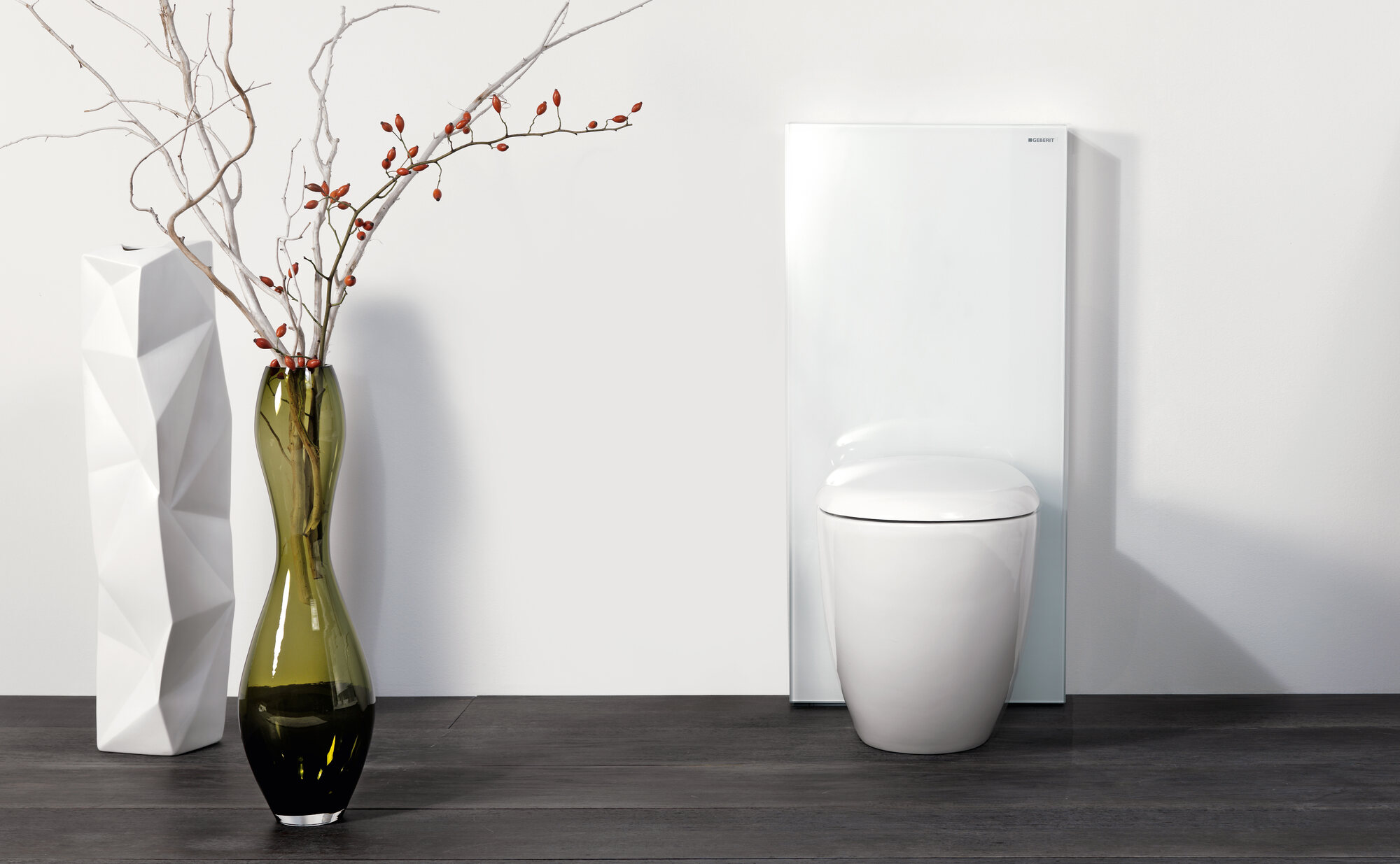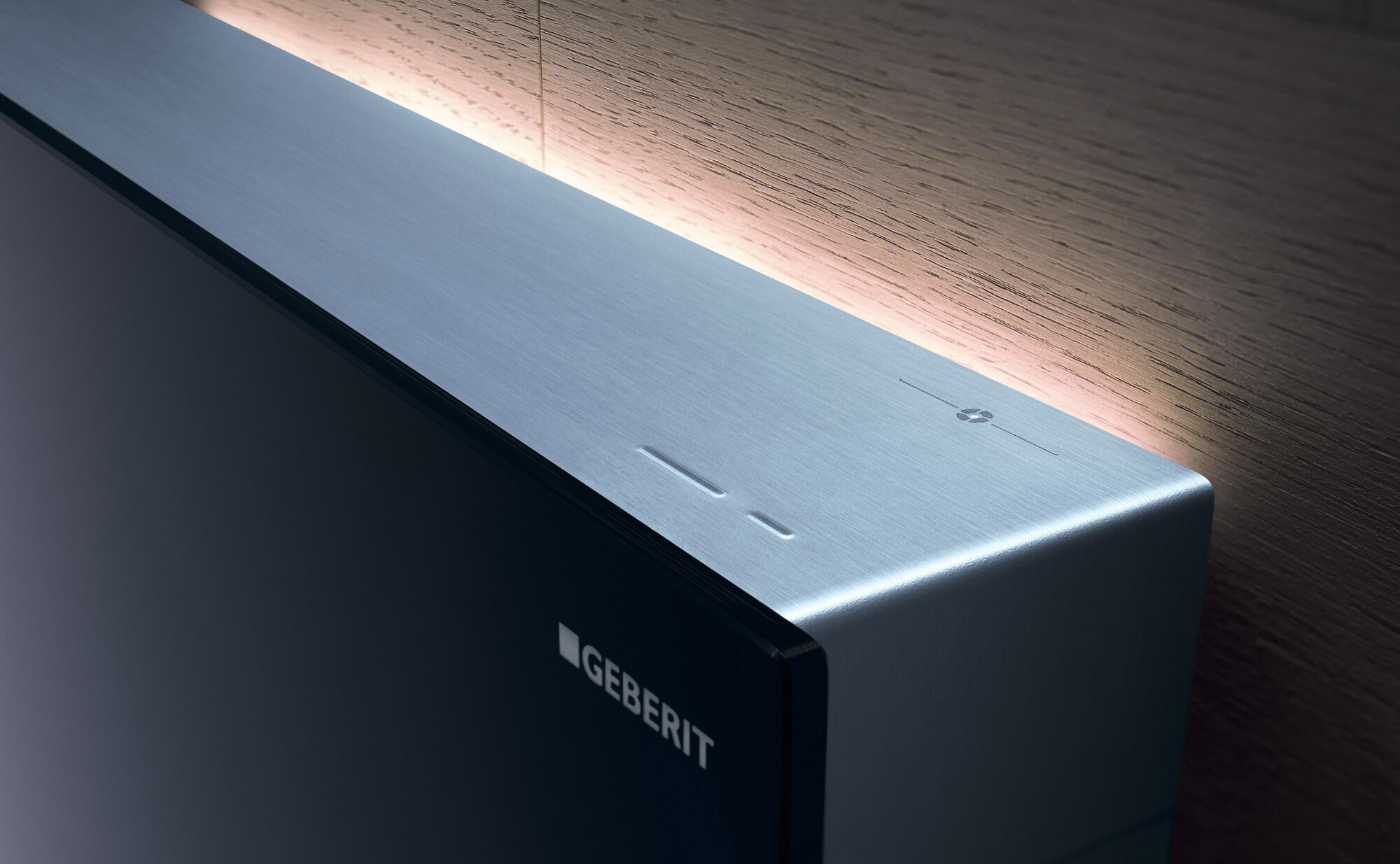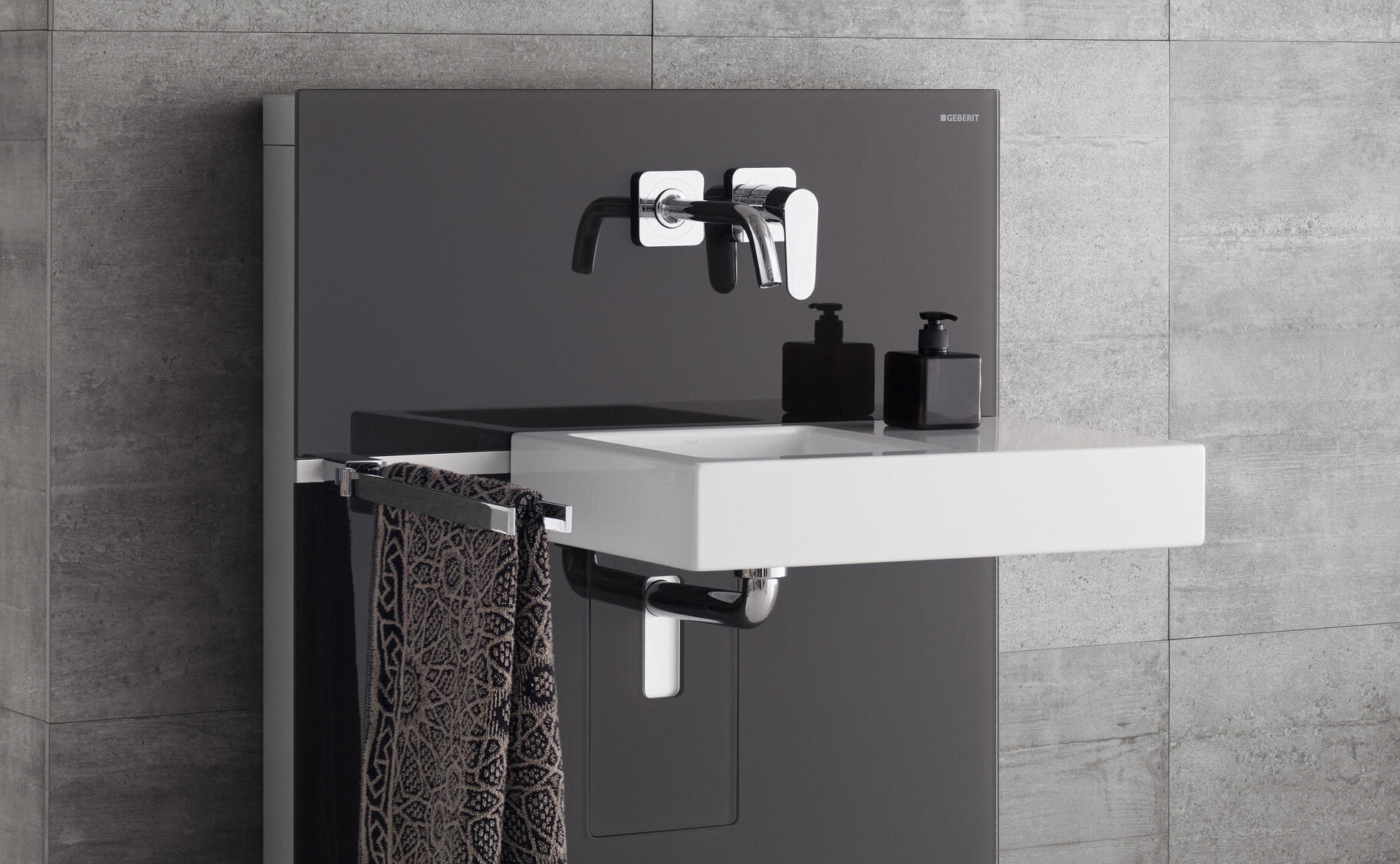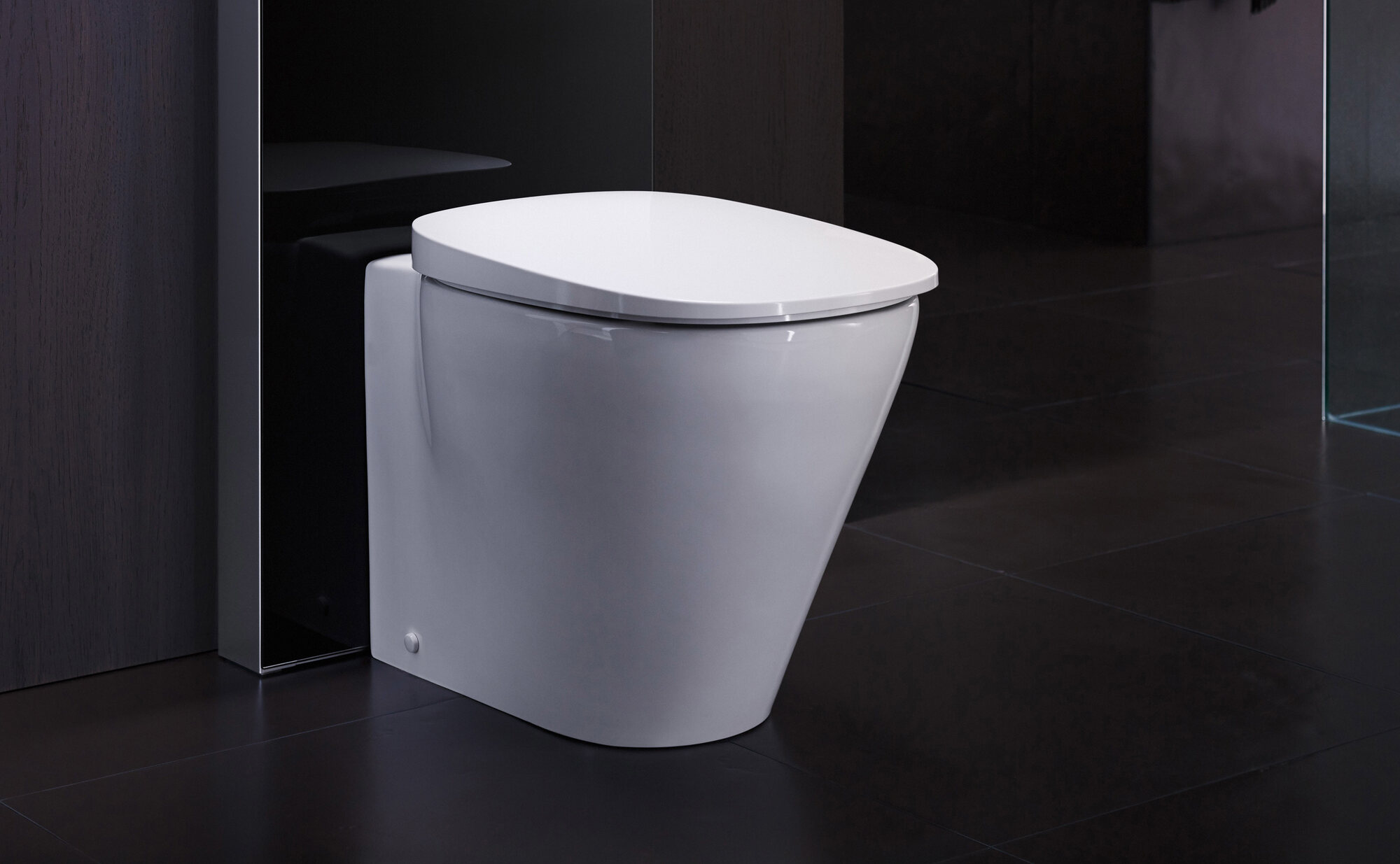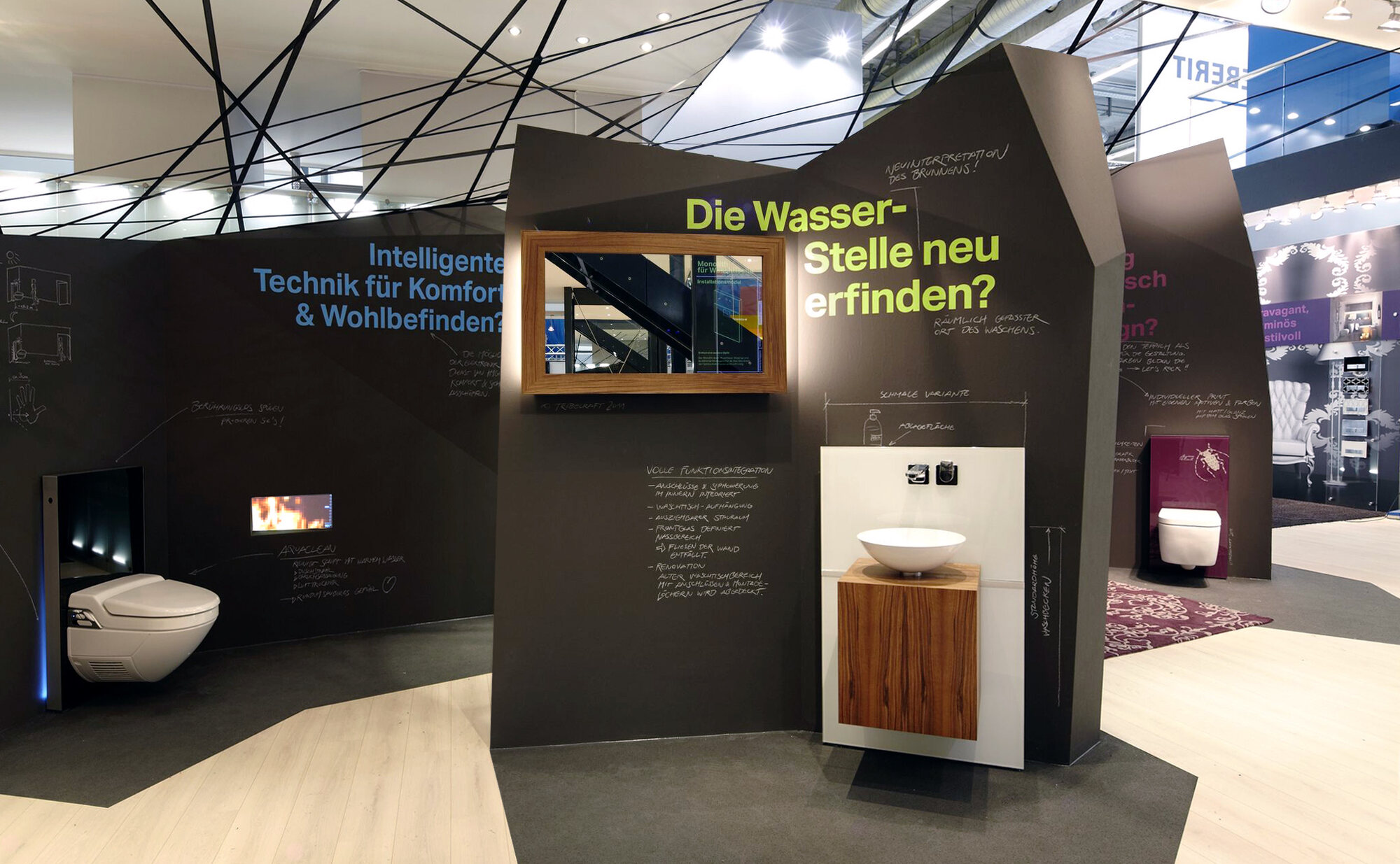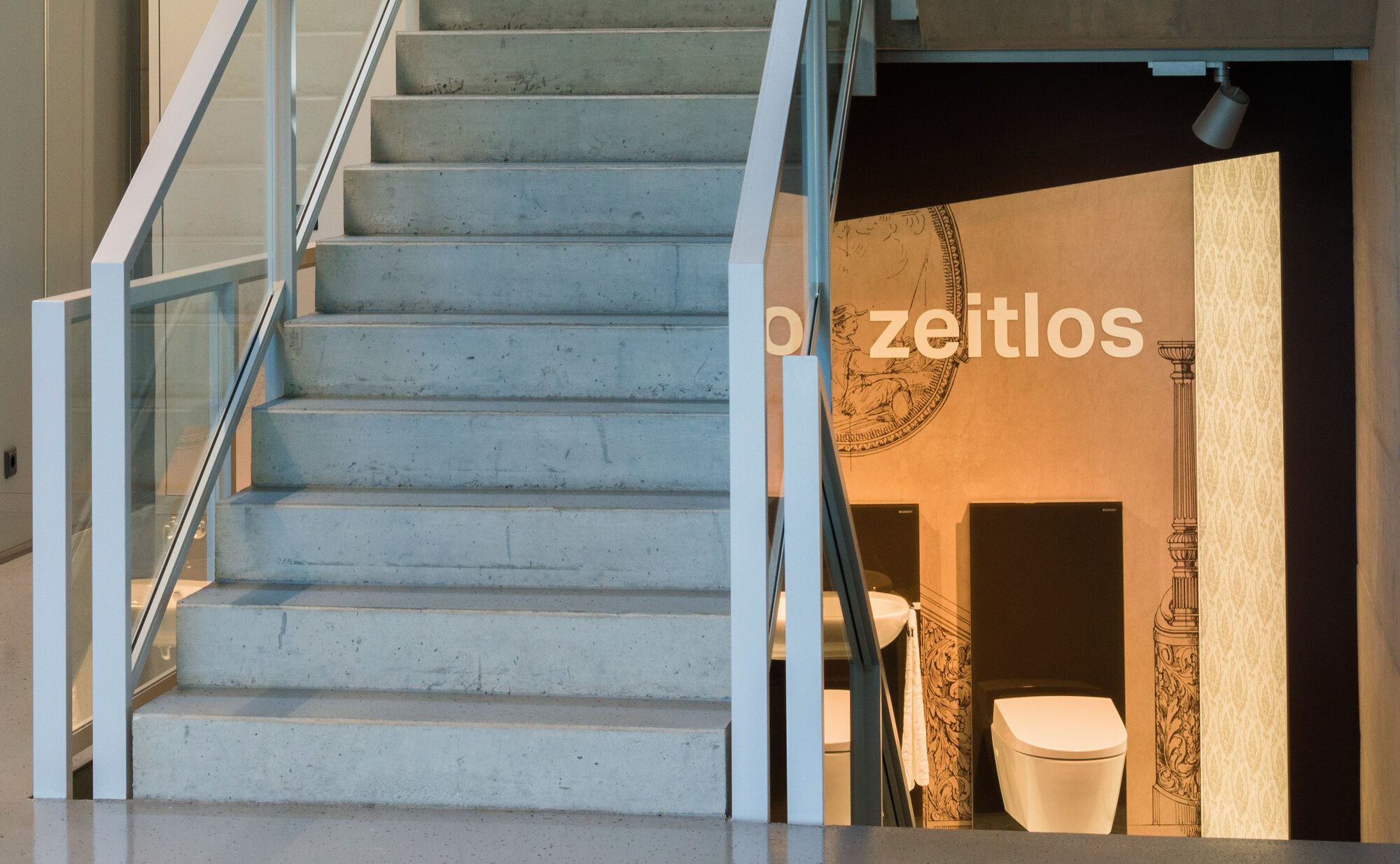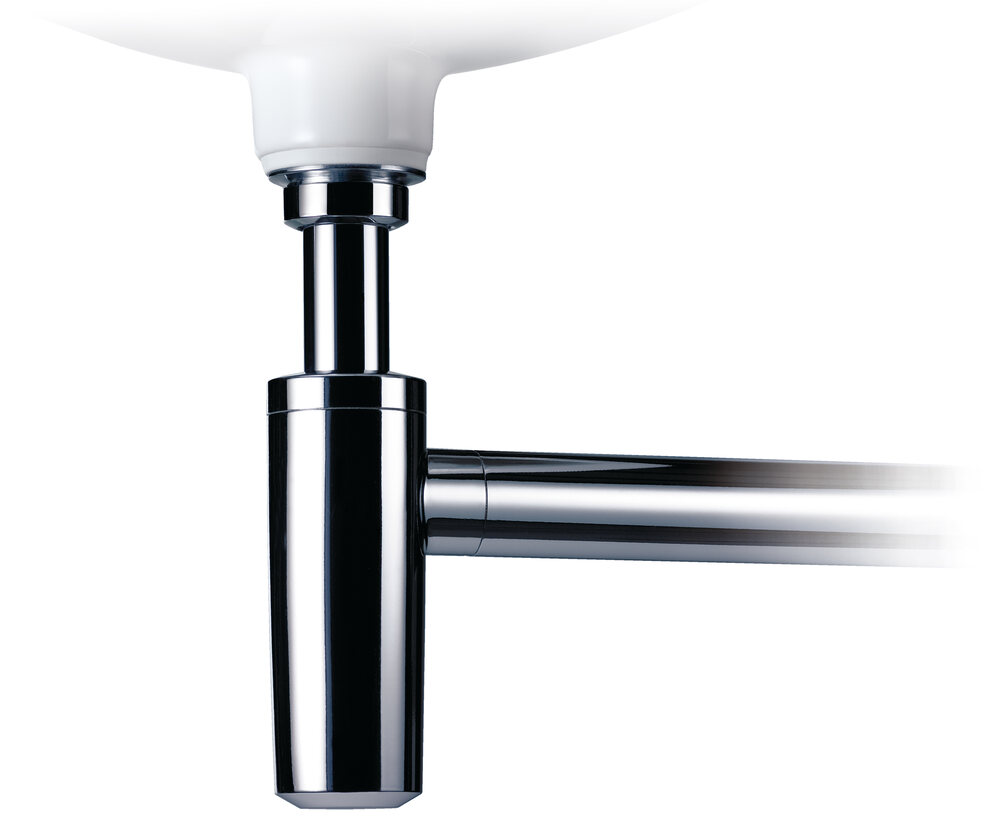Case: Geberit Monolith
Functional sophistication, outstanding design
As Marcel Heierli recalls, the question presented to Tribecraft’s developers by Geberit back then was rather mundane: “What might the next generation of WC flushing cisterns look like?” The product line manager now admits no one expected the outcome would be a prize-winning designer product.

Essentially, there are two kinds of system: on-wall and in-wall, with the flushing unit visible to the user in the former and hidden away in the latter. When Geberit brought Zurich-based Tribecraft on board to help the firm with product innovation, the external developers were given an extremely open-ended brief. “That’s quite a risk for a company this size,” says Tom Stäubli, a designer at Tribecraft, as you have no idea where the process of innovation is going to take you when you set off on the creative journey. “It might yield a winning concept, it might give rise to only a modest idea, or the products that we have in mind could end up being far too ‘out there’ for the client.” He laughs before adding, “although this rarely happens — fortunately.” Allowing their external consultants plenty of leeway to develop ideas was a conscious decision at Geberit, however; they wanted the designers to approach the job in an entirely unblinkered fashion. This was initially unusual, as Heierli recalls, “but we were absolutely convinced that we could only set new standards if we gave ourselves free rein.”

After extensive research and comprehensive market and sales analysis, Tribecraft submitted a proposal that involved reimagining the cistern (which had hitherto been no more than an unremarkable container sitting atop the ceramic bowl) and relocating it, so it was no longer recognizable as an item of sanitary technology. The idea they came up with was the Monolith sanitary module, a product whose iconic design not only brought new quality to sanitary technology but also redefined it visually. Here, Tribecraft’s designers were responding to the ongoing trend of upgrading the bathroom as a living space. While the modules — made of glass and brushed aluminum — are complex assemblies, they are also beautiful objects that are more reminiscent of stylistic architectural features than items of plumbing.
A lot of design practices present product drafts that look nice but don’t meet functional requirements, says Heierli. The challenge at Tribecraft is different, however: “As there are almost as many designers as engineers working under the same roof at Tribecraft, every product sketch has real substance from both a design and a functional perspective. If our people at Geberit run up against some unforeseen challenge in implementing an idea, we can count on the Tribecraft engineers to go the extra mile and come up with new approaches that get us closer to our ultimate goal.”

Tribecraft is committed to squaring the circle — creating outstanding design that works in the real world. Whether you’re talking about material surfaces or functional sophistication, the interdisciplinary team will always be striving for the very best. As Heierli explains, this unflinching eye for detail means that working with them isn’t always a walk in the park: “We knew it would take effort on our part, but that’s precisely why we brought in Tribecraft.” The industry reaction when Monolith was launched in 2010 was further proof that this labor was paying off, as it won a range of awards. Shortly after the product was launched, several competitors brought products to market whose design was “lifted” straight from the Monolith range, recalls Heierli — but they all failed to make any impression. “Either the design wasn’t quite right or the technology was not on a par.” Geberit is now positioning itself to become a market leader on the design front. A few years ago, the company was already a byword for high-caliber products, long service life and sustainable manufacturing; adding “top-quality design” to this list of attributes has always been one of Tribecraft’s goals throughout their history of working together.
Both firms share similar product values and set the bar very high when it comes to performance. “Their attitude, valuing quality while simultaneously having no fear of change, is one of Geberit’s greatest strengths,” says Tom Stäubli. It is also one of the reasons why a partnership developed that has lasted for more than fifteen years. Such a mindset makes collaboration more efficient, as each side knows how the other ticks, but it can also be a challenge, as Stäubli explains: “Normally, the impartial perspective of the lay person is one of our strengths, but Geberit’s world of bathrooms and sanitary technology has become familiar territory by now.” Tribecraft therefore go to great lengths to preserve a strict outsider’s perspective to counterbalance the many years of experience, and it seems to be working — many a product has been dreamt up over the years, with some ideas implemented and others discarded.
But this is what it is all about, according to Stäubli: “Innovation doesn’t mean getting a product onto the market; it means change.” In Geberit’s case, it also meant a new understanding of themselves and improved public perception of the company. As Heierli explains, “When I joined Geberit twenty years ago, only industry specialists had heard of us. Awareness of the brand has skyrocketed in the meantime, and I am sure that our collaboration with Tribecraft has played a key role.
